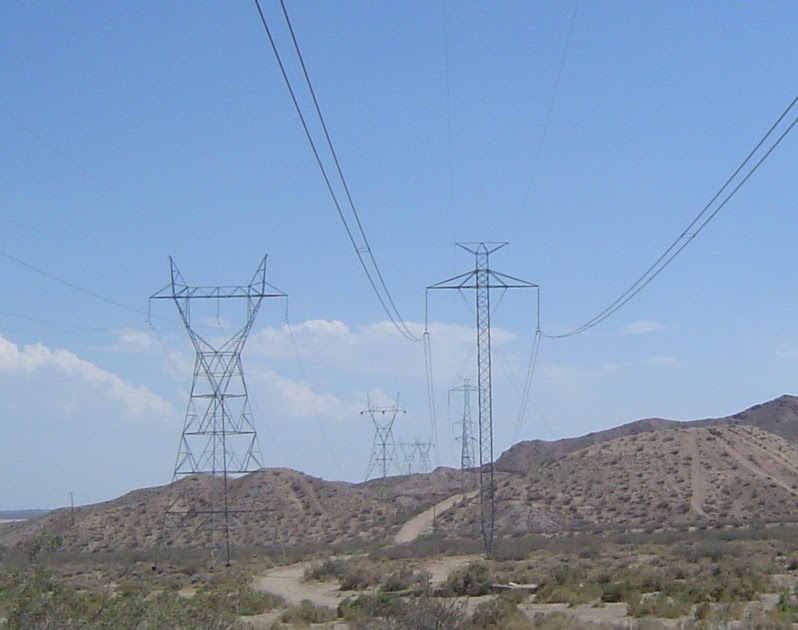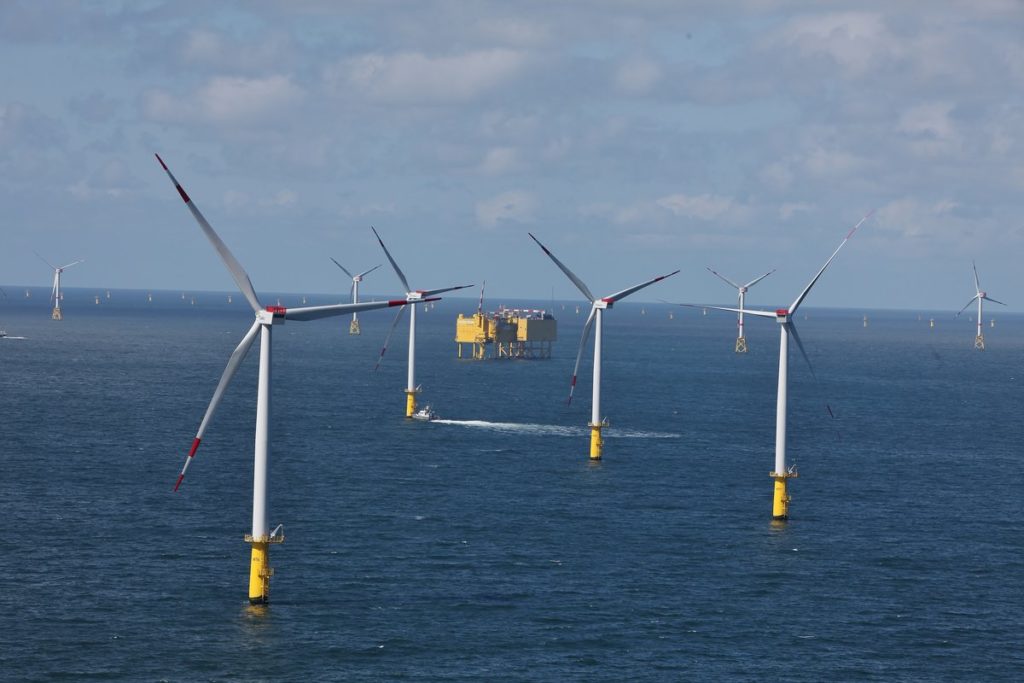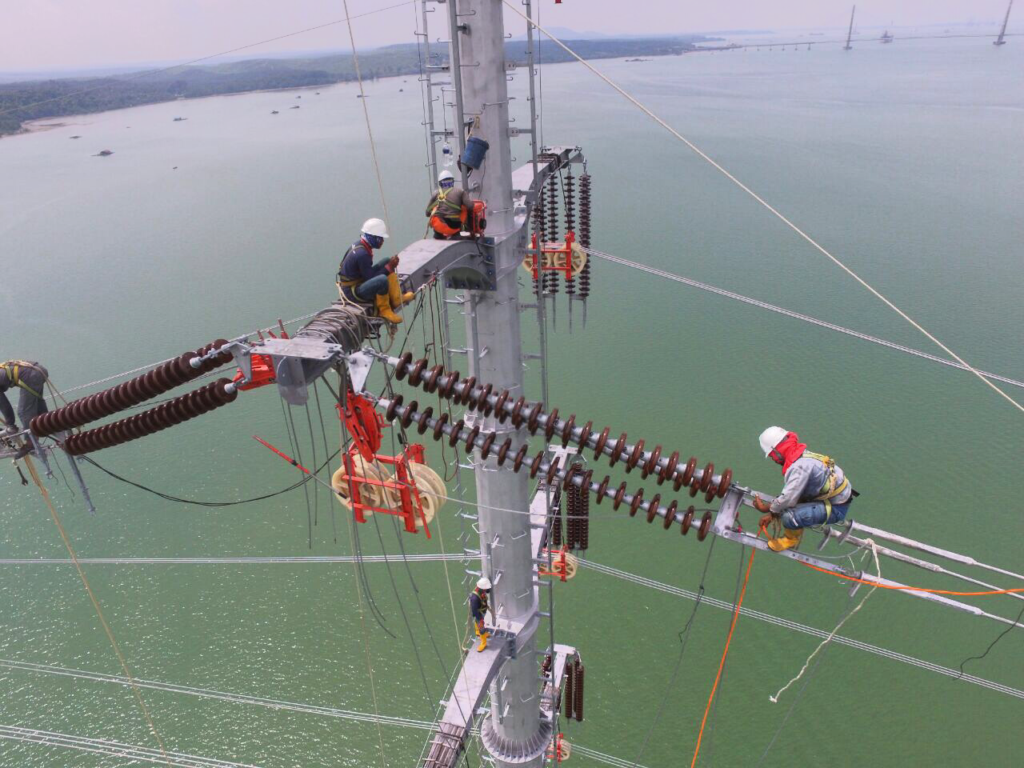September 17, 1964 President Lyndon Johnson addressed the Intertie Victory Breakfast in Portland, Oregon. It was the closure of more than a decade of multi-dimensional political controversies and challenges, and the start of probably the largest electric infrastructure project in the United States after the US Government built the Bonneville and Grand Coulee dams and power stations on the Columbia River in the 30s and 40s.
The Pacific Northwest/Pacific Intertie is the transmission lines that enabled hydro power from the Columbia River to flow to California. The Intertie consists of both HVAC (High Voltage Alternating Current) and HVDC (High Voltage Direct Current) lines, which after expansions now have a combined capacity of 7,900 MW.

The centerpiece in the new transmission was the HVDC system, which was awarded in 1965 to a joint venture of ABB and General Electric. At that time, it was a new technology. Only two commercial projects in the world had been built before. The Pacific Intertie represented a step-function increase in power, 1440 MW transmitted at ±400 kV over 1362 kilometers (846 miles). Even though extensive studies and hearings had taken place four years preceding the contract awards, it was a significant technology risk the owners of the transmission system took, Bonneville Power Administration (BPA) for the northern part including the Celilo converter station in Oregon and Los Angeles Department Water and Power (LADWP) in the lead for the southern part including the Sylmar converter station. (In addition to LADWP the Southern Owners consisted of Southern California Edison and the Cities of Burbank, Glendale and Pasadena.)
The risk was high, but the reward was higher, much higher. Economically it meant that Southern California got access to the inexpensive hydro power from the Columbia River. It was estimated that already 1976 Los Angeles saved about $600,000 a day. Charles Luce, the Administrator of BPA, estimated that the payback of the project was that each year during its estimated 50 years life the construction cost would be paid for. In addition, the environmental benefits were big. It enabled Los Angeles to start shutting down oil-fired power plants, which were the main source of generation and a major source of air pollution at that time. Over the years the Pacific Intertie has helped balance the Western electric grid by also moving thermal power north, when dry years/seasons have reduced the hydro power.
Following the Pacific Intertie, the HVDC technology has continued to develop, both in terms of transfer capabilities as well as controllability. The former was recently demonstrated with a new record recently set in China with the Changji – Guquan HVDC transmission project with a capability to transfer 12 gigawatts (GW) of power at ±1100 kV over 3300 km (2050 miles). In terms of controllability the HVDC Voltage Source Converter (VSC) technology, first introduced by ABB in 1997, provides additional benefits such as black-start capabilities and voltage support to connected AC systems. Combined with impressive progress in extruded polyethylene cables HVDC VSC has also become the technology of choice for large offshore wind developments.

Notwithstanding all the growth of HVDC, HVAC remains the core and dominant part of the transmission grid. Also, in the field of HVAC transmission there have been substantial developments such as the FACTS (Flexible AC Transmission System) program. To quote EPRI (Electric Power Research Institute), which has been instrumental in the development, “FACTS technology encompasses a family of solid-state power electronic devices that permit more electricity to be carried on existing lines and enhance system response to counteract transient disturbances almost instantaneously”. Other interesting developments are dynamic line ratings.
Nevertheless, the most important development may turn out to be the introduction of high-performance conductors such as CTC Global ACCC® conductor and 3M™ ACCR conductor. Almost doubling the power transfer capability can be very attractive in order to maximize the capacity on a given right of way. Other benefits are lower line losses and lower line sags.

In a future with ambitious targets for much more renewables on the system, while maintaining reliability and keeping costs affordable, it seems like a prerequisite to expand the transmission system in order to move gigawatts of power over long distances. After all, the best opportunities to expand hydro power is in the North, solar in the Southwest, onshore wind in the Midwest and offshore wind in the Northeast. The importance of transmission is well illustrated in Germany, where further build out of wind in the North will depend on resolving transmission bottlenecks in the north-south “corridors”.
A strong transmission grid also helps balance the variability of wind and solar. Even though any comparison between transmission and battery storage is case-specific, in general for bulk energy a transmission solution is superior to a battery storage solution. As a hypothetical example, a 1000 miles long 345 kV double circuit transmission line will transfer 1500 MW of power and cost in the ballpark of $2.2 billion (assuming $2.2 million per mile). The transmission line operates 24×7. A battery storage for 6 hours of the same amount of power would cost about twice as much, in the ballpark of $4.5 billion (assuming $500 per kWh).
According to the Department of Energy, U.S. Energy Information Agency (DOE EIA) (2017), transmission has been only 13 % of the average price of electricity. Generation represents 59 % and Distribution 28 %. Considering a future scenario of lower cost for generation and the increased importance of transmission, we may in 10-15 years from now to see a shift to transmission becoming 20 % of the average price for electricity, while distribution grows to 30 % and generation drops to 50%.
Despite all technology progress and evident economic benefits, the biggest challenge to large scale transmission projects may be political. Moving bulk power long distances over several states/provinces or countries is never trivial due to getting all the needed approvals and right-of-way. The main obstacle tends to be the states “in between”. Without any immediate benefits for those states it is hard to get necessary approvals from them. It is not a coincidence that almost all HVDC projects worldwide have been bi-lateral between two neighboring states/provinces or between two neighboring countries.
The Pacific Intertie required the US and Canadian Government, several states, including California, Washington and Oregon, as well the province of British Columbia to come together. It did not come easy. It took time, but ultimately, they set a great example making a large intraregional vision become reality.